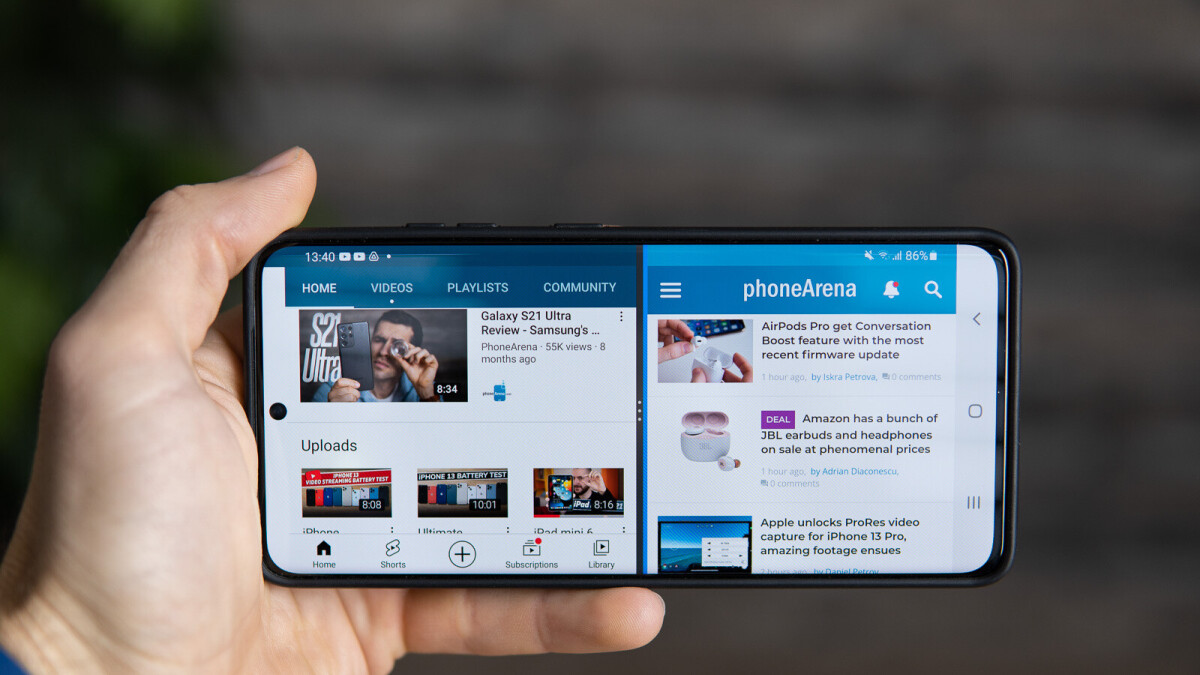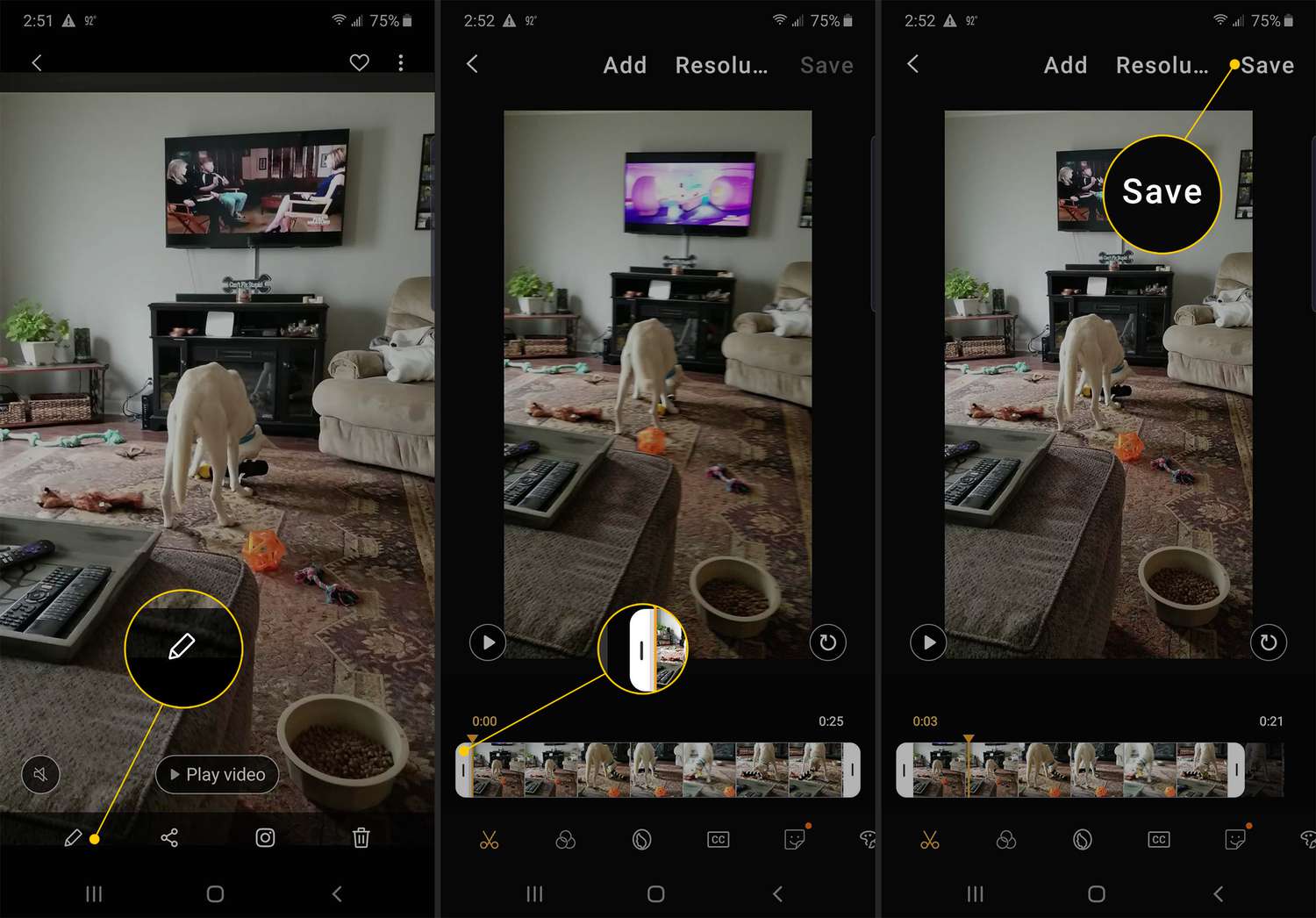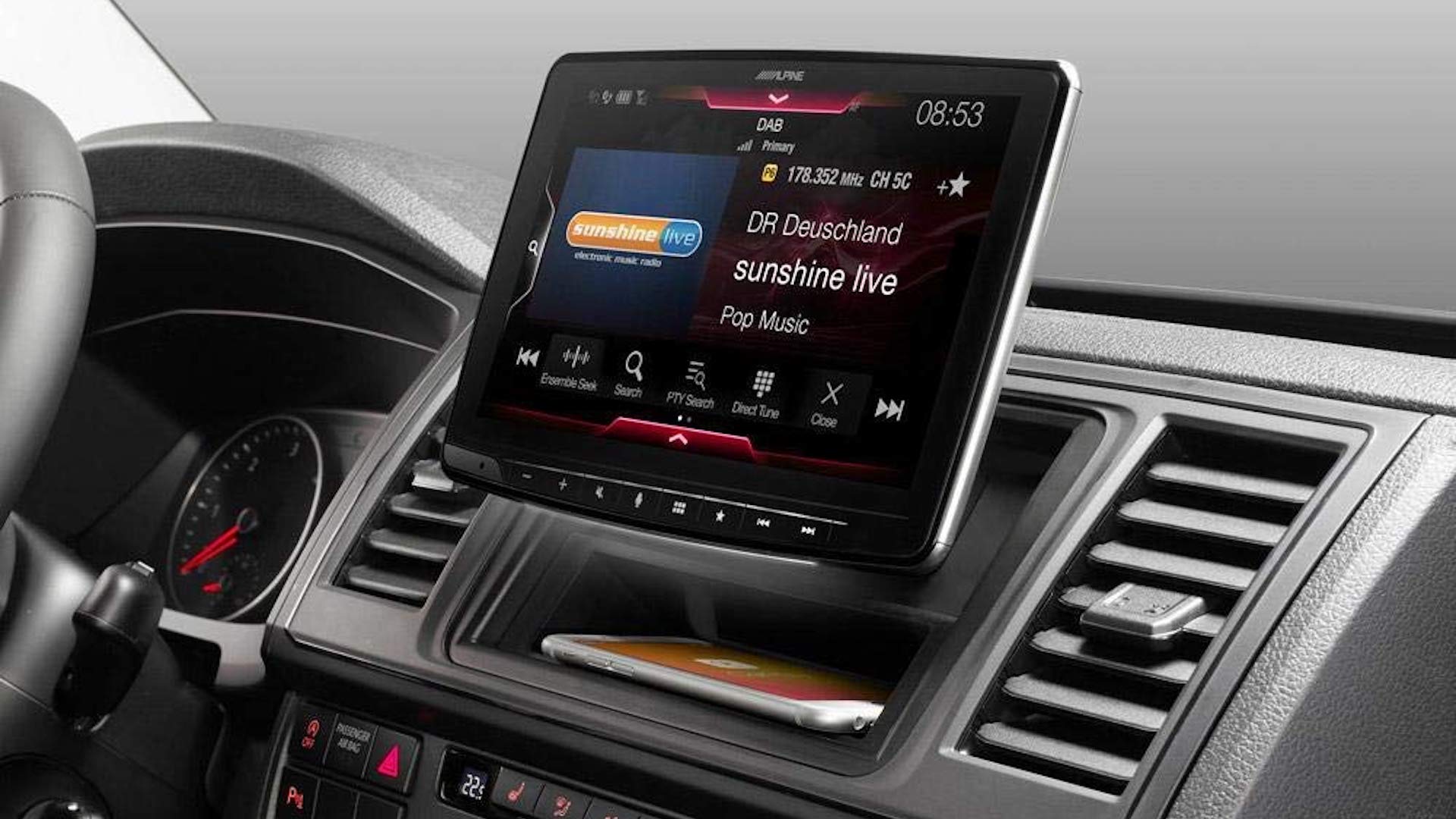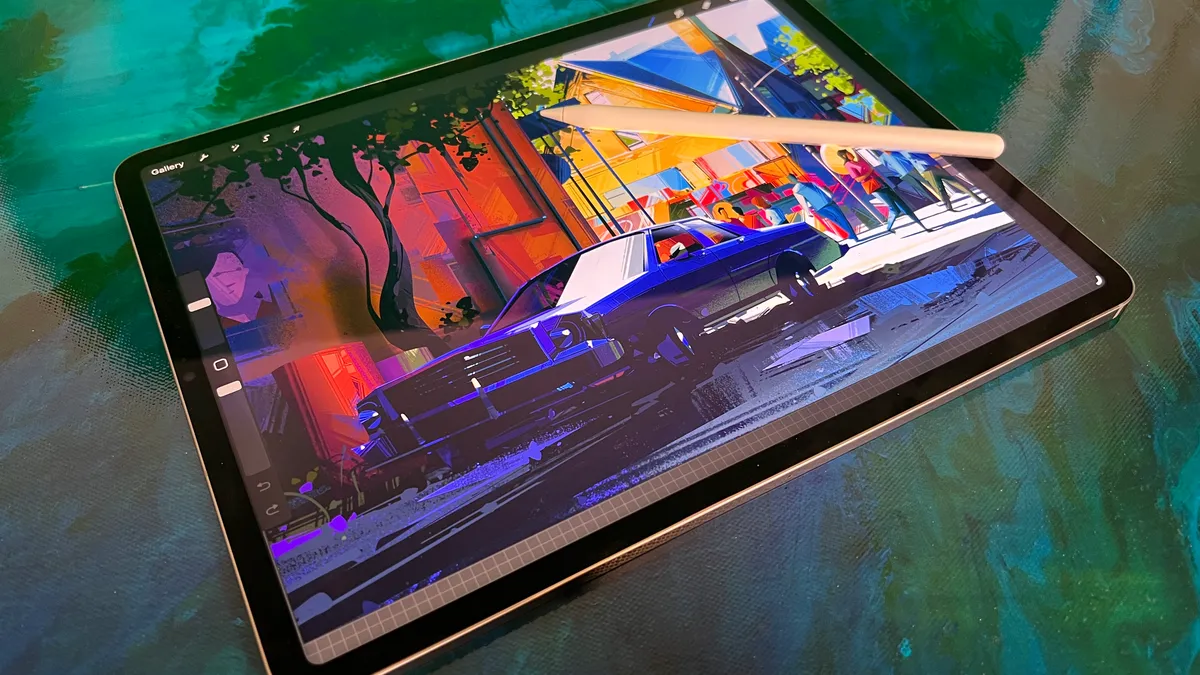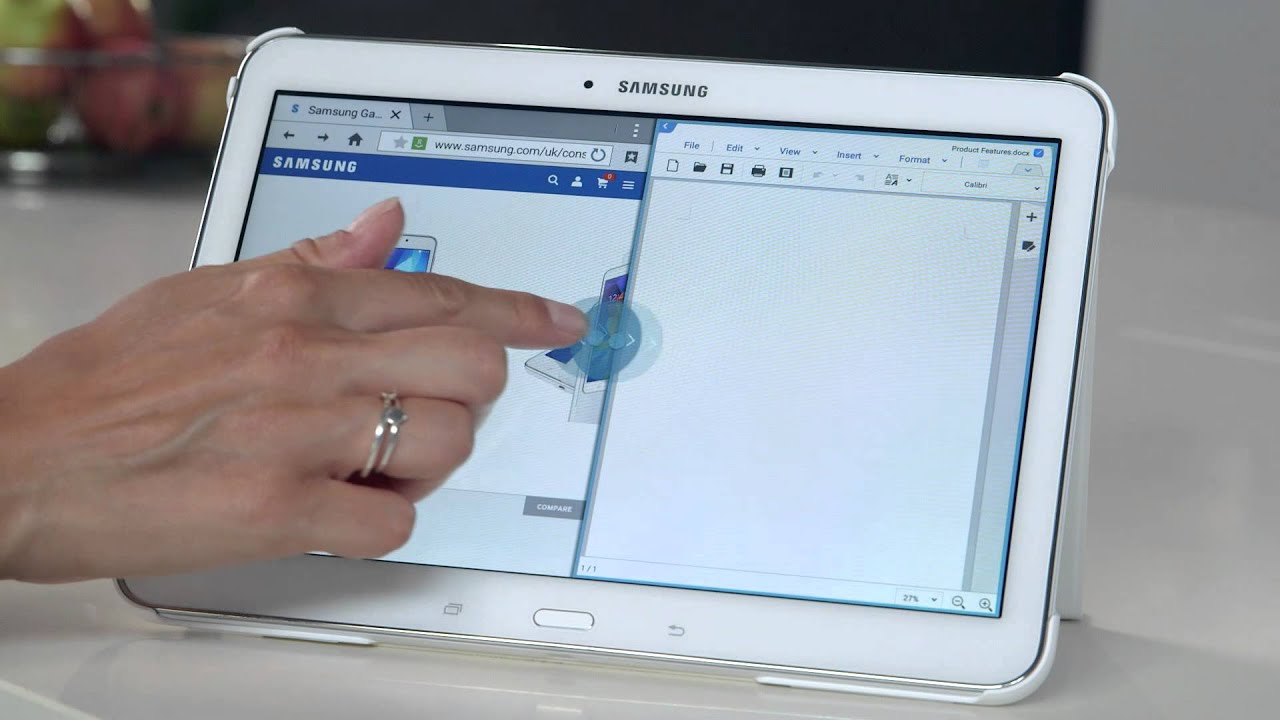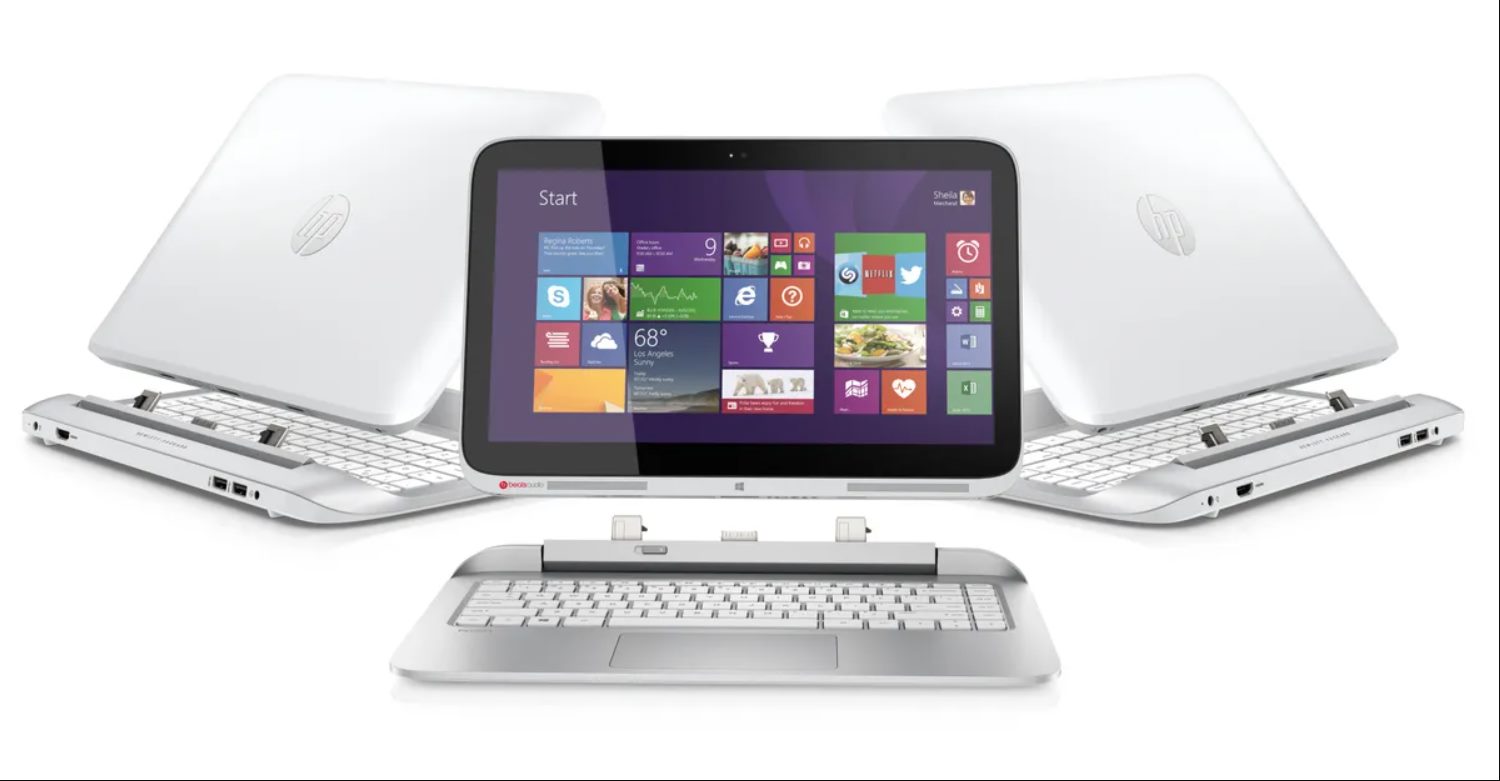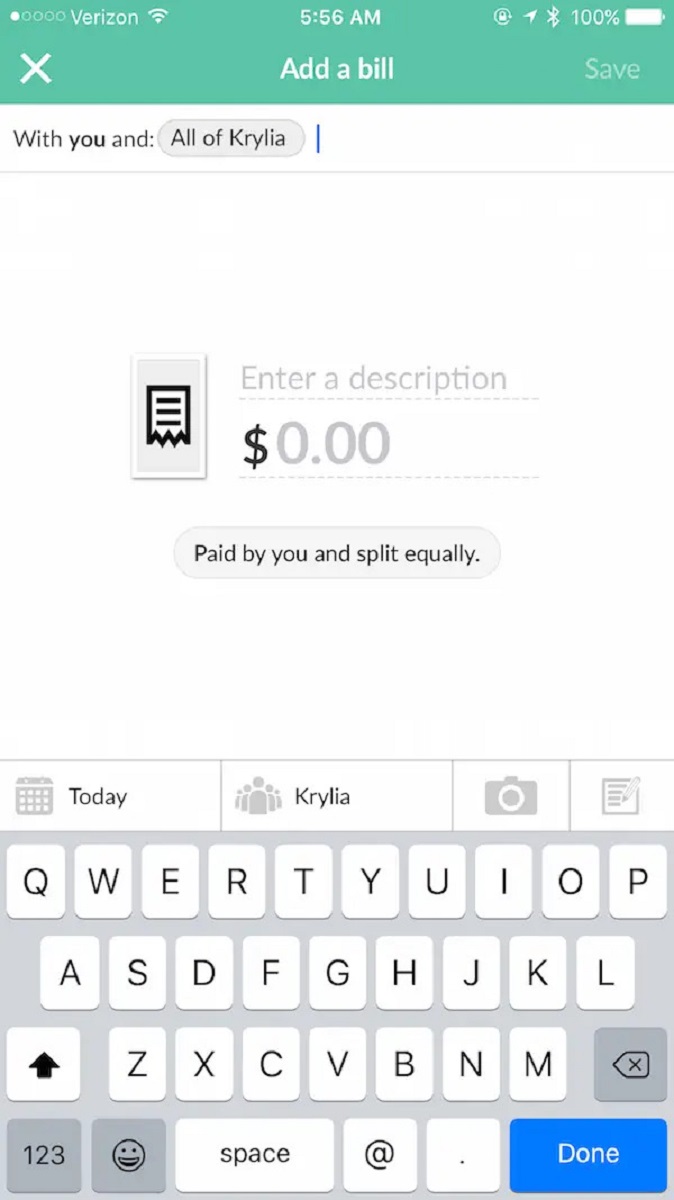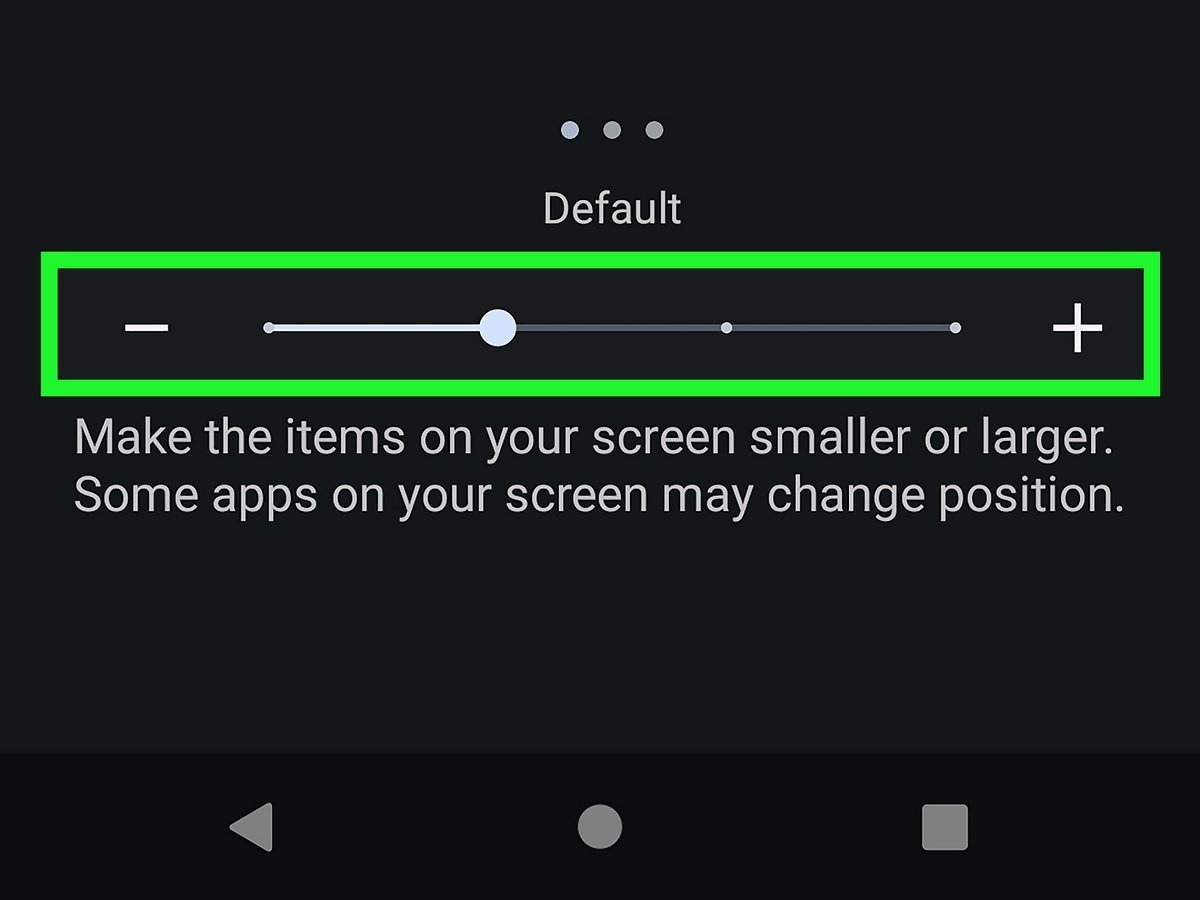Introduction
Split screen is a convenient feature that allows you to use two apps simultaneously on your Android device. Whether you want to multitask, compare information, or simply stay productive, split screen can significantly enhance your user experience. With this feature, you no longer have to constantly switch back and forth between apps, saving you time and effort.
In this article, we will explore the concept of split screen, its benefits, and how you can enable and utilize this feature on your Android device. Whether you’re using a smartphone or a tablet, the ability to have multiple apps open at the same time can greatly enhance your productivity and efficiency.
Split screen functionality has become increasingly popular, especially with the growing trend of larger display sizes on Android devices. It allows you to have two apps running side by side, each occupying a separate portion of the screen. This can be immensely helpful in various scenarios, such as referencing information from one app while working on another, jotting down notes while watching a video, or chatting with friends while browsing the web.
With split screen, you have the freedom to choose which apps you want to use in tandem. This flexibility enables you to tailor your multitasking experience to suit your specific needs and preferences. Whether you’re a student, professional, or simply a tech-savvy individual, split screen can revolutionize the way you use your Android device.
In the following sections, we will guide you through detailed instructions on enabling split screen on Android, adjusting the screen size, and exiting split screen mode. We will also address some common troubleshooting issues that you may encounter along the way. So, let’s dive in and discover how you can take advantage of the split screen feature on your Android device.
What is Split Screen?
Split screen, also known as multi-window mode, is a feature available on Android devices that allows you to view and interact with two apps simultaneously on the same screen. Instead of switching between apps, you can have them both open side by side, making it easier to perform multiple tasks or access information from different sources at once.
With split screen, you can divide your device’s display into two separate windows, with each window displaying a different app. This feature is particularly useful for tasks that require multitasking, such as referencing information, taking notes, or conducting research while writing an email or a document.
Split screen can be activated in either portrait or landscape mode, depending on your device’s orientation and your personal preference. In portrait mode, the two apps will be displayed vertically, whereas in landscape mode, they will be shown side by side horizontally.
It’s important to note that not all apps support split screen functionality. However, many popular apps, such as messaging apps, web browsers, email clients, and productivity suites, are compatible with this feature, allowing you to seamlessly use them in split screen mode.
Having the ability to use two apps simultaneously can greatly enhance your productivity and efficiency. For example, you can reference an article from a web browser while taking notes in a word processor, or you can watch a video while engaging in a video call. Split screen provides you with the flexibility to customize your multitasking experience and tailor it to your specific needs.
While split screen is primarily designed for larger screen devices, such as tablets or phablets, it is also available on certain smartphones that have sufficient screen real estate. Some devices even offer additional features, such as adjustable screen size, allowing you to allocate more or less space to each app depending on your preference.
Now that you understand what split screen is and how it can benefit you, let’s dive into the next section to learn how to enable split screen on your Android device.
Benefits of Using Split Screen
Using split screen on your Android device offers a multitude of benefits that can enhance your productivity and streamline your multitasking experience. Here are some key advantages of utilizing this feature:
- Improved Efficiency: Split screen allows you to work on two tasks simultaneously, eliminating the need to constantly switch between apps. This saves you time and increases your efficiency by allowing you to accomplish multiple tasks in parallel.
- Enhanced Multitasking: With split screen, you can easily compare information, copy and paste content between apps, and perform actions seamlessly. Whether you’re conducting research, responding to emails, or managing your calendar, split screen enables you to multitask effectively.
- Increased Productivity: By having two apps open side by side, you can tackle more complex tasks effortlessly. For example, you can watch a tutorial while following along with a coding app, or reference a document while composing an email.
- Effortless Note-taking: Split screen is especially useful for note-taking. You can have a lecture or presentation open on one side of the screen while taking notes on the other side, eliminating the need to switch between apps or windows.
- Seamless Communication: With split screen, you can stay connected with your contacts while browsing the web, reading articles, or watching videos. You can have a messaging app open on one side of the screen while using another app on the other side, ensuring you never miss an important message.
- Flexibility and Customization: Android devices offer the ability to adjust the size of each app window in split screen mode. This flexibility allows you to allocate more space to the app you’re primarily using or create a balanced split screen setup based on your preference.
- Better Use of Screen Real Estate: Split screen enables you to make the most of your device’s screen real estate, especially on larger devices. Instead of wasting space by displaying only one app at a time, you can utilize the entire screen efficiently.
By utilizing the split screen feature on your Android device, you can significantly enhance your multitasking capabilities, increase your productivity, and make the most efficient use of your device’s screen space. Now that you understand the benefits of using split screen, let’s move on to the next section to learn how to enable this feature on your device.
How to Enable Split Screen on Android
Enabling split screen on your Android device is a simple process that allows you to take advantage of this powerful multitasking feature. There are multiple ways to enable split screen, depending on your device and Android version. Here are three common methods:
- Method 1: Using Recent Apps Button
- 1. Open the first app you want to use in split screen mode.
- 2. Tap the Recent Apps button (usually represented by a square or three lines) at the bottom of your screen.
- 3. Swipe up or down to locate the second app you want to use and then tap it.
- 4. The screen will now split into two, with each app occupying half of the display. You can adjust the size of each app window by dragging the divider between them.
- Method 2: Using App Switcher
- 1. Open the first app you want to use in split screen.
- 2. Hold down the App Switcher or Overview button (usually represented by a square or a recent apps icon) at the bottom of your screen.
- 3. The screen will present a list of recently used apps. Tap and hold the second app you want to use until it expands into a split screen view.
- 4. The screen will now show both apps side by side, and you can adjust the size of each app window as needed.
- Method 3: Using App Shortcut
- 1. Open the first app you want to use in split screen mode.
- 2. Open the app switcher by tapping the Recent Apps button.
- 3. Look for the app you want to use in split screen and tap and hold its app icon.
- 4. From the context menu that appears, select “Split Screen” or a similar option.
- 5. The screen will split, and both apps will be displayed side by side.
This method works on most Android devices:
If your device has an App Switcher or Overview button, you can use this method:
On some devices, you can access split screen through the app shortcut menu:
Once you’ve enabled split screen, you can adjust the size of each app window by dragging the divider between them. You can also interact with each app independently, allowing you to work seamlessly and efficiently.
Now that you know how to enable split screen on your Android device, let’s move on to the next section to learn how to adjust the split screen size to suit your preferences.
Method 1: Using Recent Apps Button
One of the most common methods to enable split screen on Android is by using the Recent Apps button. This method works on most Android devices and allows you to effortlessly multitask with two apps simultaneously. Here’s how you can use the Recent Apps button to enable split screen:
- Open the first app: Start by opening the first app that you want to use in split screen mode. This could be any app that supports split screen functionality, such as a web browser, messaging app, or productivity tool.
- Access the Recent Apps menu: To access the Recent Apps menu, locate the Recent Apps button on your Android device. It is usually represented by a square or three horizontal lines and is located at the bottom of the screen.
- Swipe to find the second app: Once you’ve opened the Recent Apps menu, swipe up or down to scroll through the list and locate the second app that you want to use in split screen mode. You can also use the search bar at the top to quickly find the app if the list is long.
- Tap on the second app: Once you’ve found the second app, tap on its preview window in the Recent Apps menu. This will open the app and initiate the split screen mode.
- Adjust the app windows: After selecting the second app, the screen will automatically split into two. Each app will now occupy half of the screen. You can adjust the size of each app window by dragging the divider between them, allowing you to allocate more space to one app if needed.
By using the Recent Apps button to enable split screen, you can easily switch between two apps without having to exit or close any of them. This enables seamless multitasking and boosts your productivity. It’s worth noting that not all apps support split screen functionality, so make sure both apps you want to use are compatible before using this method.
Now that you know how to enable split screen using the Recent Apps button, let’s move on to the next section to explore another method: using the App Switcher.
Method 2: Using App Switcher
Another method to enable split screen on your Android device is by using the App Switcher or Overview button. This method is commonly available on Android devices and provides a quick and convenient way to multitask with two apps side by side. Here’s how you can use the App Switcher to enable split screen:
- Open the first app: Begin by opening the first app that you want to use in split screen mode. It could be any app that supports split screen functionality, such as a web browser, email client, or social media app.
- Access the App Switcher: Next, locate the App Switcher or Overview button on your Android device. This button is typically represented by a square or a recent apps icon and can usually be found alongside the navigation bar at the bottom of the screen.
- Switch to the second app: To switch to the second app and activate split screen, press and hold the App Switcher button. On pressing and holding the button, the screen will display a list of recently used apps or a thumbnail view of the apps currently running on your device.
- Select the second app: From the list or thumbnail view, find the second app that you want to use in split screen and tap and hold its thumbnail. The app’s thumbnail will expand, indicating that it is ready to be used in split screen mode.
- Enter split screen mode: Once you tap and hold the second app’s thumbnail, the screen will split into two, with each app occupying its own window side by side. You can now start using both apps simultaneously.
Using the App Switcher to enable split screen on Android provides a seamless way to switch between two apps and maximize your multitasking capabilities. This method allows you to quickly access your recently used apps and effortlessly transition into split screen mode. However, not all apps may be compatible with split screen, so ensure that both apps you intend to use are supported.
Now that you are familiar with the method of enabling split screen using the App Switcher, let’s explore another method: utilizing the app shortcut menu.
Method 3: Using App Shortcut
An alternative method to enable split screen on your Android device is by utilizing the app shortcut menu. This method is available on certain devices and allows you to access split screen functionality directly from the app shortcut menu. Here’s how you can use the app shortcut to enable split screen:
- Open the first app: Start by opening the first app that you want to use in split screen mode. Ensure that the app supports split screen functionality.
- Access the app switcher: Next, open the app switcher by tapping the Recent Apps button, usually located at the bottom of the screen. The app switcher displays a list of recently used apps or a thumbnail view of the currently running apps on your device.
- Identify the app shortcut: Look for the second app that you want to use in split screen and locate its app icon or thumbnail in the app switcher. On some devices, you may need to tap and hold the app icon to access additional options.
- Trigger the app shortcut menu: Once you have identified the app shortcut, tap and hold the app icon to reveal the app shortcut menu. The app shortcut menu typically contains various options related to the selected app.
- Select “Split Screen” or similar option: From the app shortcut menu, look for an option that indicates “Split Screen” or a similar function. Tap on this option to enable split screen mode.
- Enter split screen mode: Upon selecting the “Split Screen” option, the screen will divide into two, with each app occupying its respective window. You can now use both apps simultaneously, adjusting the size of each app window as needed.
Using the app shortcut menu to enable split screen provides a convenient way to access this functionality directly from the app switcher. However, please note that not all devices or Android versions may support this method. Additionally, ensure that the apps you intend to use in split screen mode are compatible with this feature.
Now that you are familiar with the method of enabling split screen using the app shortcut menu, let’s move on to the next section to learn how to adjust the size of the split screen windows according to your preference.
How to Adjust Split Screen Size
Once you have enabled split screen on your Android device, you may want to adjust the size of the app windows to optimize your multitasking experience. Android provides the flexibility to customize the split screen size according to your preference. Here’s how you can adjust the split screen size:
- Go to the split screen view: Start by enabling split screen using one of the methods mentioned earlier. This will bring you to the split screen view, with two app windows side by side.
- Locate the divider line: In the split screen view, you will notice a vertical line or divider between the two app windows. This divider line can be dragged to adjust the size of each app window.
- Drag the divider line: Tap and hold the divider line with your finger or stylus, then drag it left or right to adjust the size of the app windows. As you drag the divider, you’ll notice that one app window becomes larger while the other becomes smaller, allowing you to allocate more screen space to your preferred app.
- Release the divider line: Once you are satisfied with the app window sizes, release your finger or stylus from the screen. The app windows will adjust accordingly to the positions you set.
By adjusting the split screen size, you can create a layout that suits your specific needs and preferences. Whether you prefer a balanced split screen with equal-sized windows or want to prioritize one app over the other, the ability to customize the split screen size provides a personalized multitasking experience.
Remember that some apps may have a minimum size requirement, and they may not be resizable beyond a certain limit. Additionally, resizing the app windows may affect the app’s user interface or functionality, so be mindful of how it may impact your app usage.
Now that you know how to adjust the split screen size, let’s proceed to the next section to learn how to exit the split screen mode.
How to Exit Split Screen Mode
When you’re done using split screen mode on your Android device and want to return to the regular, full-screen view, there are a few simple ways to exit split screen mode. Here’s how you can do it:
- Use the App Switcher: Tap the Recent Apps button or use the App Switcher gesture on your device. In the App Switcher, you’ll see the two app windows arranged side by side. Tap and hold the divider line between the app windows, then drag it all the way to the top or bottom of the screen until the app you want to close disappears from view. This action will exit split screen mode.
- Swipe the App Window: In split screen mode, you can swipe the app window you want to close off the screen. Simply swipe from either the left or right edge of that app’s window towards the center of the screen. The swiped app window will disappear, and you’ll be left with the remaining app in full-screen view.
- Use the App Switcher Shortcut: Depending on your device and Android version, you may have a shortcut to access the App Switcher directly. On some devices, you can swipe up from the center-bottom edge of the screen or use a dedicated button to open the App Switcher. Once in the App Switcher, follow the steps mentioned earlier to exit split screen mode.
After using one of these methods to exit split screen mode, you will return to the regular view, where only one app occupies the entire screen. This allows you to focus on one task at a time without the split screen division.
Now that you know how to exit split screen mode, let’s move on to the next section to discuss some common troubleshooting tips and solutions for split screen issues.
Troubleshooting Split Screen Issues
While split screen functionality on Android devices is generally straightforward and reliable, you may encounter occasional issues or challenges. Here are some common troubleshooting tips and solutions to address split screen issues:
- App Compatibility: Not all apps are compatible with split screen functionality. If you’re experiencing issues with a specific app, ensure that it supports split screen mode. If not, consider using alternative apps or reaching out to the app developer for support.
- Device Compatibility: Split screen may not be available on all Android devices or versions. Ensure that your device is running the required Android version and has the necessary hardware capabilities for split screen mode. Check your device’s user manual or consult the manufacturer’s website for compatibility information.
- Orientation Support: Split screen mode may have different behavior in portrait and landscape orientations. If you’re having trouble activating split screen, try switching your device’s orientation and see if that resolves the issue.
- App-Specific Limitations: Some apps may have limitations on their functionality while running in split screen mode. These limitations can vary from app to app, so if you’re experiencing issues or missing features, make sure to check the app’s documentation or contact the app developer for more information.
- Restart Device: If you encounter any glitches or unexpected behavior with split screen, try restarting your device. A simple restart can often resolve temporary software-related issues, including those affecting split screen functionality.
- Software Updates: Check for any available software updates for your Android device. Manufacturers regularly release updates that can include bug fixes, performance improvements, and added features. Installing the latest updates may address split screen issues.
- Reset App Preferences: If split screen is not functioning properly for all apps, you can try resetting the app preferences on your device. To do this, go to your device’s settings, navigate to the “Apps” or “Applications” section, find and tap on the “Reset App Preferences” option. This will reset app permissions, notification settings, and default app preferences, which may help fix any split screen issues caused by misconfiguration.
If you are still experiencing persistent issues with split screen functionality on your Android device, it may be helpful to seek assistance from the device manufacturer’s customer support or visit online Android forums for further guidance from the community.
Now that you are equipped with troubleshooting tips for split screen issues, you can make the most out of this valuable multitasking feature on your Android device.
Conclusion
Split screen functionality on Android devices is a powerful tool that enhances multitasking capabilities and improves productivity. With the ability to simultaneously use two apps side by side, you can easily compare information, perform multiple tasks, and stay efficient on your Android device.
In this article, we explored what split screen is and its benefits, including improved efficiency, enhanced multitasking, increased productivity, and better use of screen real estate. We also discussed three common methods to enable split screen on Android: using the Recent Apps button, the App Switcher, or the app shortcut menu.
We learned how to adjust the split screen size and explored various ways to exit split screen mode when we no longer need it. Additionally, we provided troubleshooting tips for common split screen issues, such as app compatibility, device limitations, and orientation support.
By understanding the features and functionalities of split screen on Android devices and utilizing the methods and tips shared in this article, you can take full advantage of this multitasking feature and optimize your productivity.
So go ahead, enable split screen on your Android device, and enjoy the convenience of using two apps side by side. Enhance your multitasking capabilities, streamline your workflow, and make the most efficient use of your screen space. Happy multi-app multitasking!







